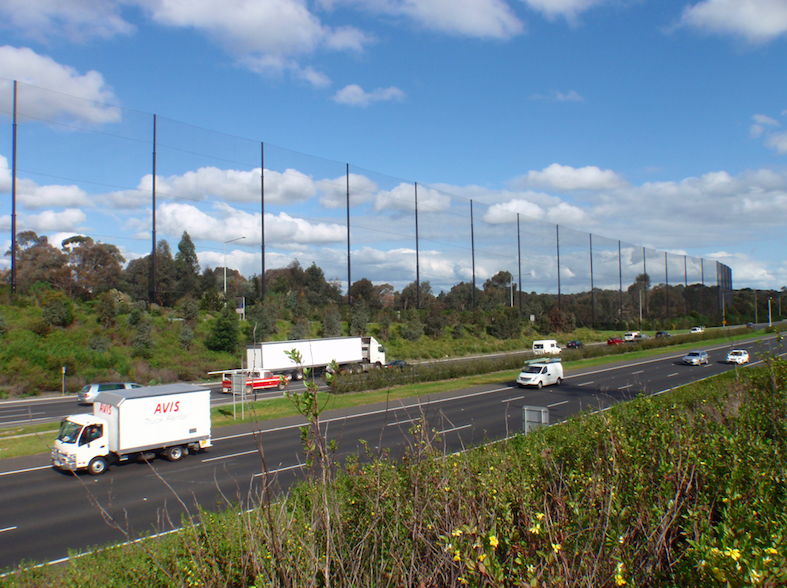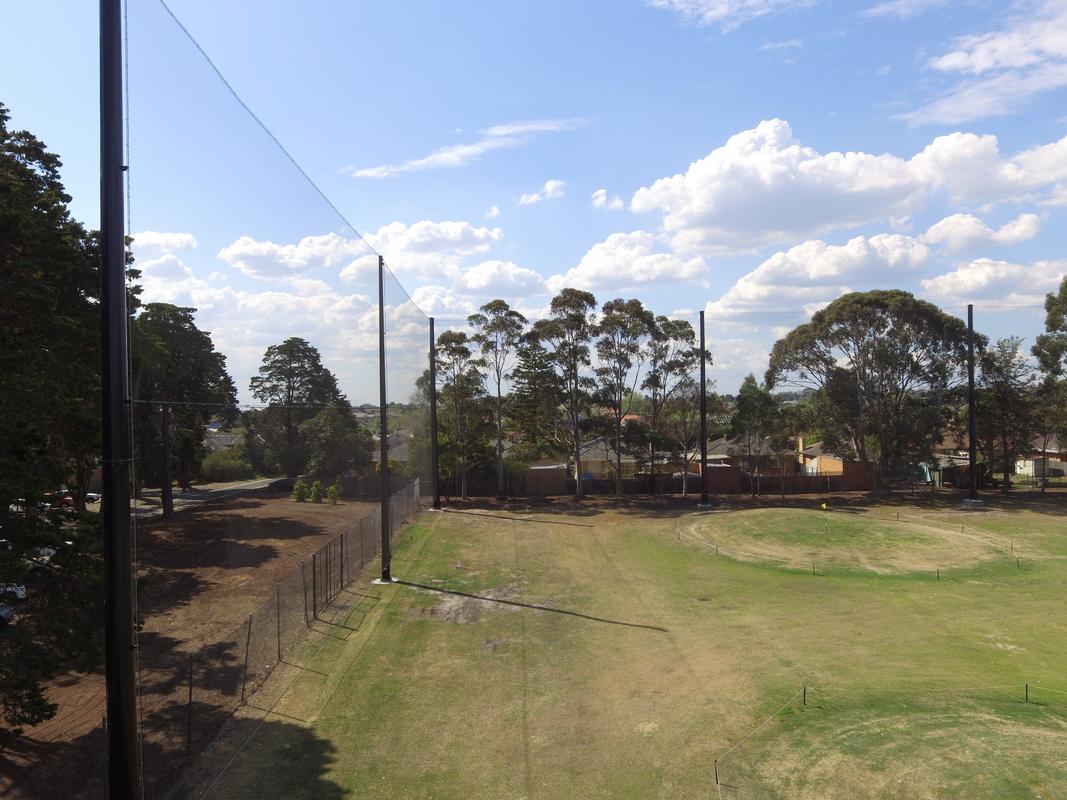The rise of high safety screens

The dilemmas facing golf course architects and golf clubs alike with safety issues around errant golf balls in an ever growing litigious market are in many cases now pitting golf course design against the sometimes more stark but certain containment option of high safety netting.
Country Club International – responsible for the design and construction of most of Australia’s high safety golf nets in the past 25 years – were asked about this evolution.
Mike Baker, founder and Managing Director of CCI, explains “I believe both course design and screen options have their place. As a golfer myself I prefer the re-design option first but if that compromises the integrity of the golf course then the fall-back position of safety screens can be for the best”.
“I think we all prefer the outlook of trees and green grass but the combination of many golf courses making bad decisions in the past by selling off land, the re-development of previously rural land into housing estates, construction of new roads and freeways and golf equipment evolution is forcing Clubs and course architects into some hard, pragmatic and often costly options”.
Safety and potential litigation are bringing these decisions forward. Where once the odd golf ball into adjacent houses was seen as a necessary inconvenience of living there, many residents are now demanding total protection and if Clubs don’t act both they and their Management can potentially be found culpable if anything happened.
Effective containment is often seen as the reasonable determinant of action on golf courses. Total containment is sometimes demanded when an incident occurs or a new development emerges. Some of the tallest and longest high safety screens are naturally now separating golf courses from new freeways or busy highways for that reason.
“Sometimes the decision is easy”, Mike said. “Golf driving and practice ranges are dealing with players who are testing their ability (or lack of) and sometimes combine that with their behavioural issues of wanting to test the limits. If there are dangers beyond those boundaries then no amount of re-design will help greatly so safety screening is a must”.
Golf courses are different. Players are generally endeavouring to keep their balls in play so good research can more properly predict quantifiable results and therefore determine the value of design revisions and/or screening.
The study with the largest sample base to date is by Dr Mark Brodie, Professor of Business at Columbia University in USA. The study was called “Assessing golfer performance using Golfmetrics” and analysed 40,000 shots representing about 500 rounds of golf from over 130 golfers on 6 courses in tournament and casual play. It divided the golfers into 4 groups – from professional to 3 amateur levels.
Interestingly, Dr Broadie’s “day job” involves research focussing on problems in the pricing of derivative securities, risk management and portfolio optimization but is also the author of ‘Every shot counts” – a book which outlines his invention of the “Strokes Gained Method” of measuring golf performance and this is used by the PGA Tour.
CCI commission Probable Golf USA to provide trajectory studies using the Broadie data overlay to determine or confirm the danger areas and help assess any alternative solutions.

Pictured above is the new safety screen installed at the Royal Melbourne, Metropolitan .
High safety screens have developed and improved significantly over the past 30 years.
Mike recalls the early days. “I built my own golf range in Melbourne back in 1987. To protect public in the park on one side and housing on the other I built then massive12m high screens. They stopped a lot of balls – not all by any means but at least I was seen to be doing something. The pole & backbrace structure derived from chain mesh fencing, polyethylene netting from fish net suppliers and wire rope rigging all inevitably failed”.
After visiting and researching high safety screens in USA, CCI brought a lot of the technology and materials back to Australia.
“They were far more developed on these screens over there”, said Mike. “They had greater access to much better netting and their engineered poles with high tensile rigging was designed to withstand semi cyclonic winds, snow storms and more. Some were being built 100’ tall!”.
Back in the mid 1990’s the Commonwealth Golf Club were facing potential closure of their practice range. A fully engineered CCI solution using the latest Redden #930 polyester netting from USA saw the construction of a new 90m long by 18m high screen which survives to this day– setting the benchmark then as the highest engineered safety screen in Australia.
Since then CCI have worked with Opus Engineering in Australia and Valmont Engineering in Canada to design and construct some of the best and highest safety screens in the world, including some notable ones such as on Eastlink and Peninsula Link in Melbourne, Wembley Golf Course in Perth, Ryde Paramatta and Thornleigh in Sydney, Darwin GC in NT and the list goes on.
Many of these are 30 metres and higher, although they almost pale in comparison to the new Top Golf facility on the Gold Coast, with 53m high screens using Redden #930 polyester netting.
More recently CCI have introduced the new tapered pole design from Valmont, using the exotic Dyneema netting – a world first. These have been installed at Royal Melbourne, Metropolitan and the new Curlewis golf range.
Pictured above is the new safety screen installed at Curlewis Golf Range.
Modern high safety screens are getting taller but stronger and lighter with the use of high quality polyester, Spectra and Dyneema netting yarns that reduce the wind loads, provide almost total transparency and exceptional longevity.
No longer the visual blight they once were, safety screens today can in fact help modern course design by letting architects retain key features of particular holes without the need to compromise.
In hindsight, holes such as Metropolitan’s signature 13th- which was totally demolished over safety issues that could have been easily rectified with a concealed screen – may well be retained.
High safety screens can provide a total containment in part. They should be used by golf course architects to simply block out the negative so hole design and playability can be enhanced.
Enquire now with CCI for more information on Safety Fencing Solutions.
info@countryclub.com.au
PH + 1300 138 804






